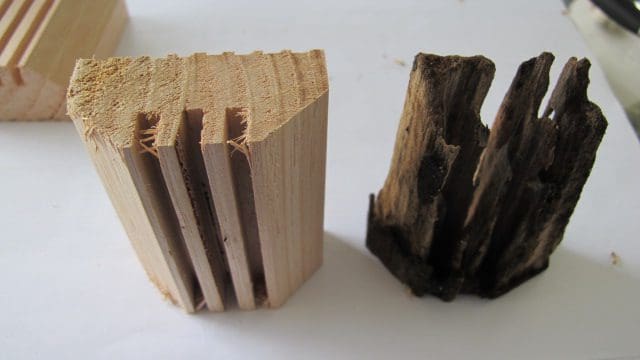Do you have a Termite monitoring system that you attempt to monitor yourself? It does take a keen eye and experience to be able to quickly decide if a timber has been attacked by termites or not, no two stations will look the same but here are a small collection of images of Nemesis stations with various levels of Termite attack in the timbers.
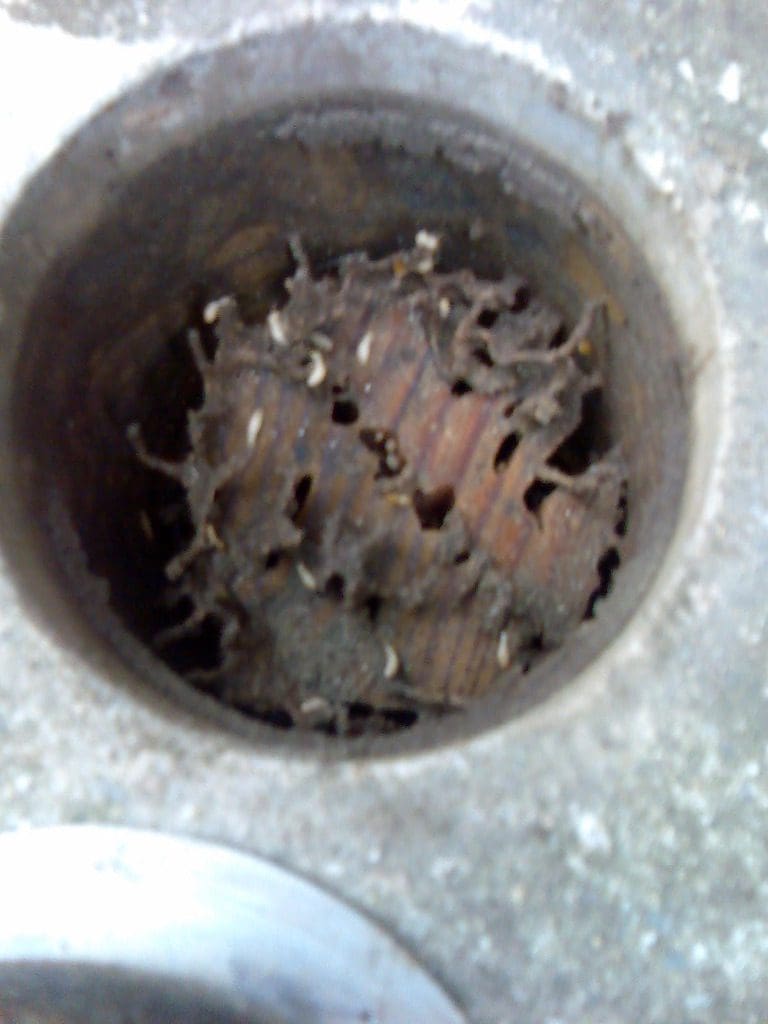
This station in The Oaks has some live termites visible and the start of some mudding being built up around and on top of the timbers
Termite monitoring timbers are often of the species Eucalyptus Regnans or Tasmanian Oak, as with all timbers when they are in direct contact with the ground they will start to decay.
The rate of decay will depend on many factors but the largest factor is the amount of moisture that the timber is subject too and the ability for the ground around the timber to dry out.
When a timber is constantly wet it will decay more quickly than a dry timber and this explains why the timbers on one side of a house usually the Southern side will decay more quickly than the timbers on the Northern side which often has sun all day and dries out quickly
These are fresh timbers just placed in this new station in Camden
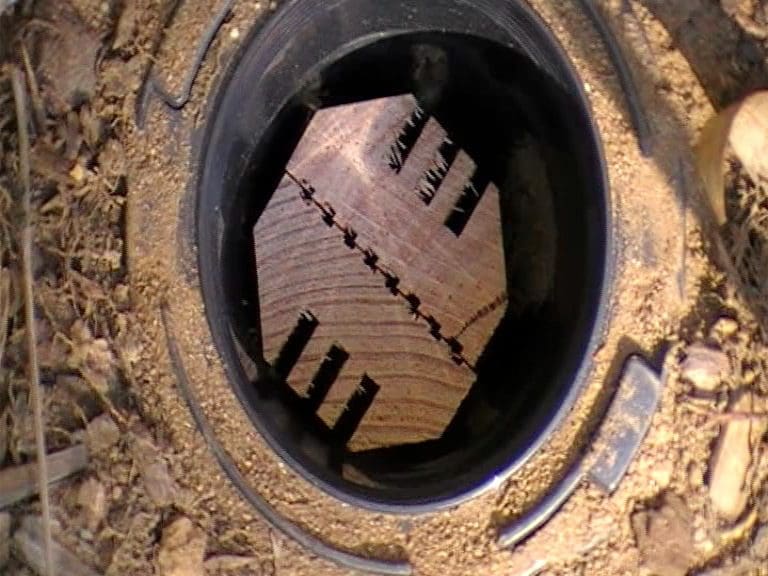
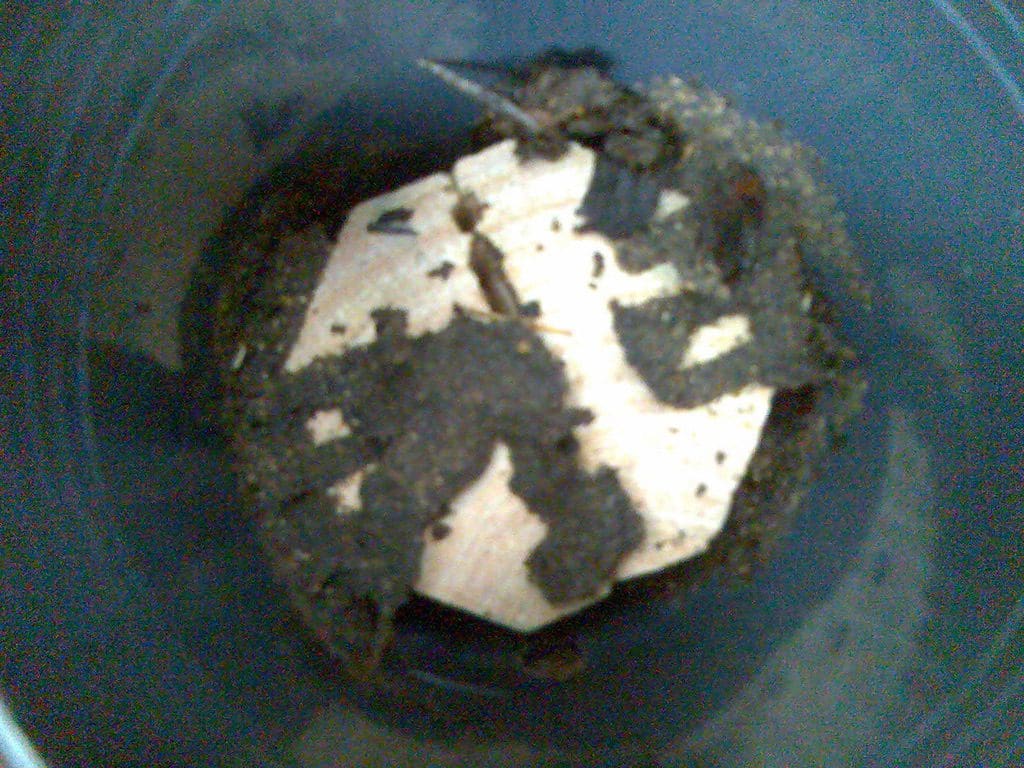
These timbers are showing the first signs of attack with termite mudding filling the flutes and gap in between at a site in Cawdor
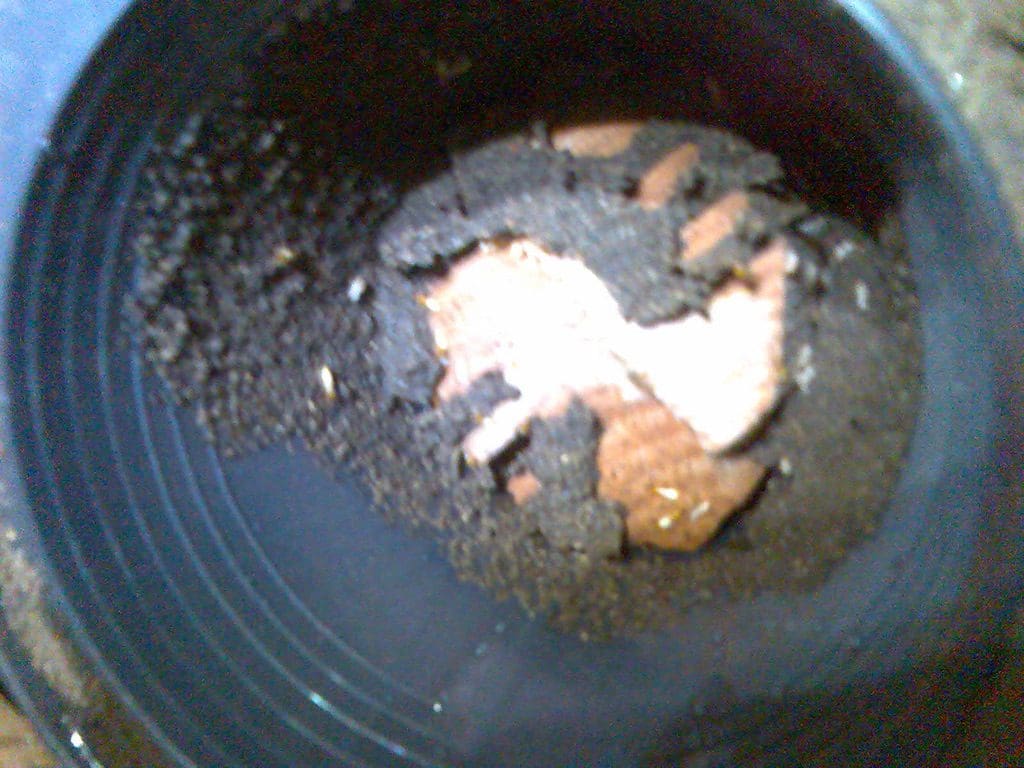
Some mudding and termites present, note mudding up the walls of the station at a house in Luddenham where this system was installed three weeks prior
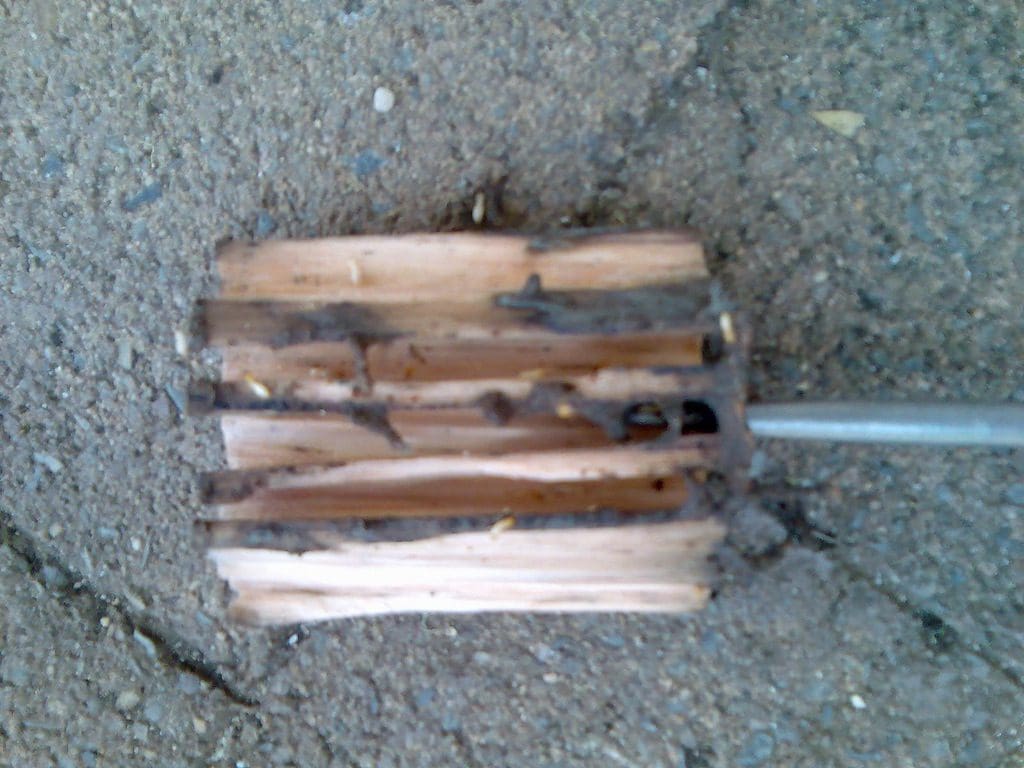
This timber has been removed to show what it looks like as the termites are eating the insert out of a system in Cobbitty
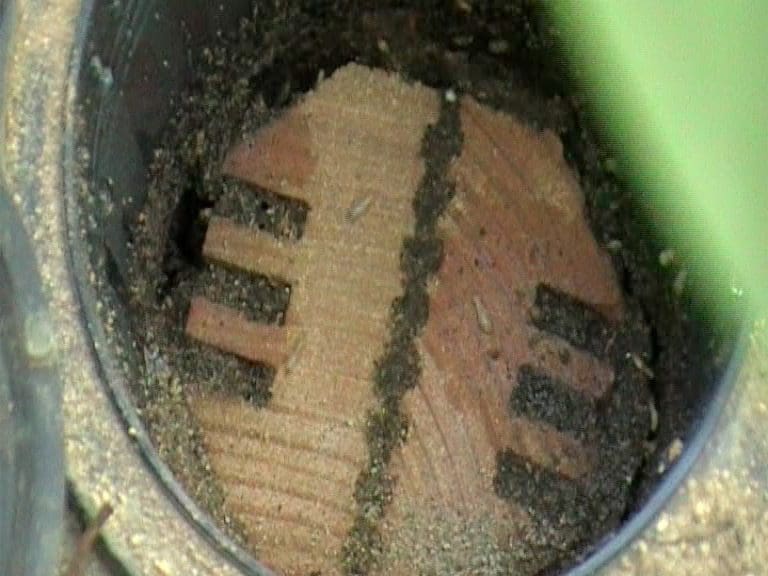
Another monitoring station this time in Narellan with mudded flutes and gap between the timbers, live termites can be seen (they disappear quickly)
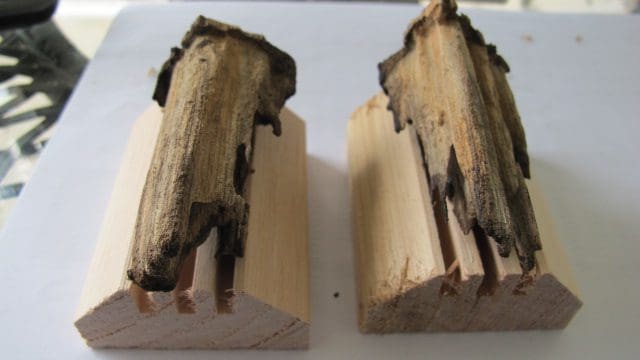
Fresh Termite monitoring timbers with older timbers affected by fungal decay sitting on top. The site these timbers came out of in Picton had been neglected for some time before we took over the monitoring
Termite monitoring timbers that stay in the ground over a period of years eventually begin to be reduced in size by fungal decay, insects such as slaters or damp wood borers.
There needs to be a significant amount of timber left to be attractive to termites if there is not enough of a bulk of timber left the best thing is to simply replace them. If there is enough room in the station leaving the original timbers in place and adding the new ones will arguably make the timbers more attractive quickly.
Monitoring timbers attacked by termites will always display the signs of faecal spotting and regurgitation marks typical of the species of termite attacking them. This can be readily discerned by an experienced person used to seeing multiple termite attacks a day but to the homeowner these slight indications may be a little too difficult, Our comprehensive Definitive Guide to Termite Detection, Treatment and Prevention in Australia will help clear that up.
Do you need to buy and install some new timbers? you can learn all about nemesis timbers here

